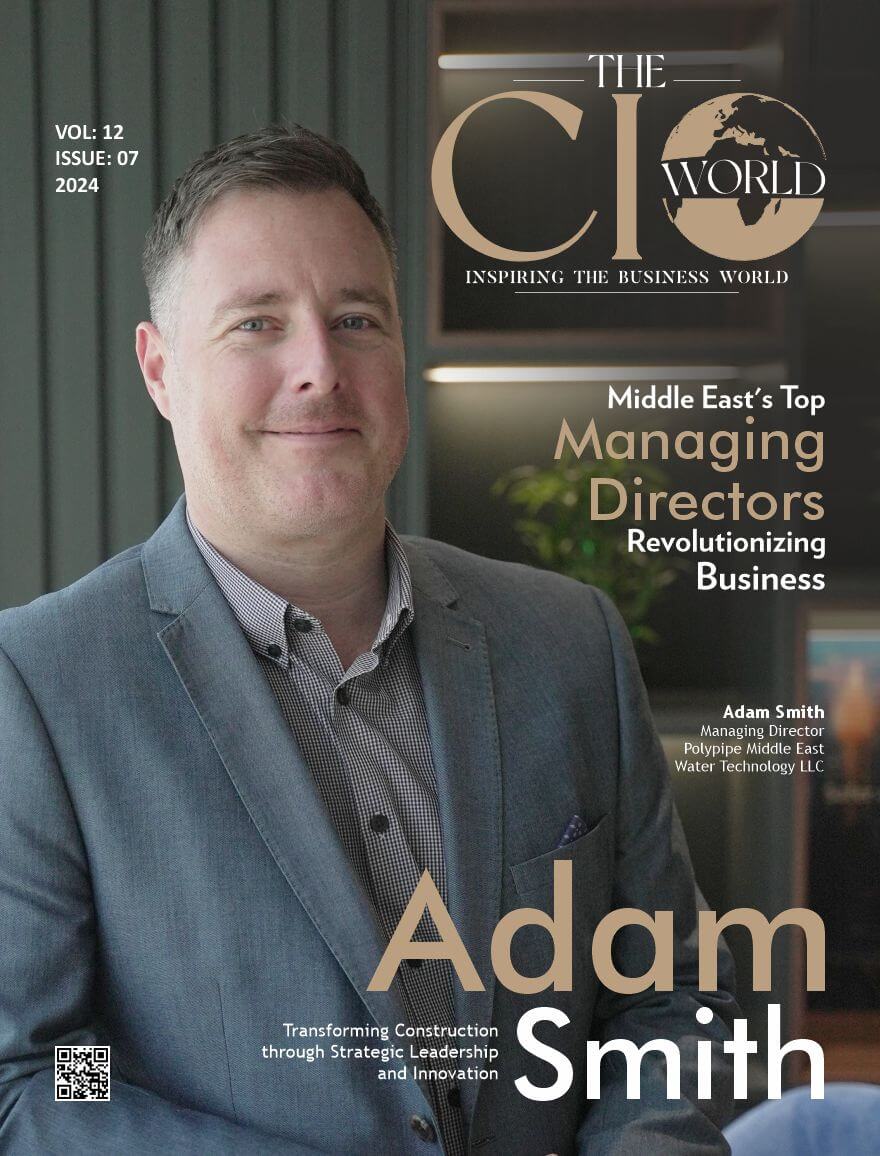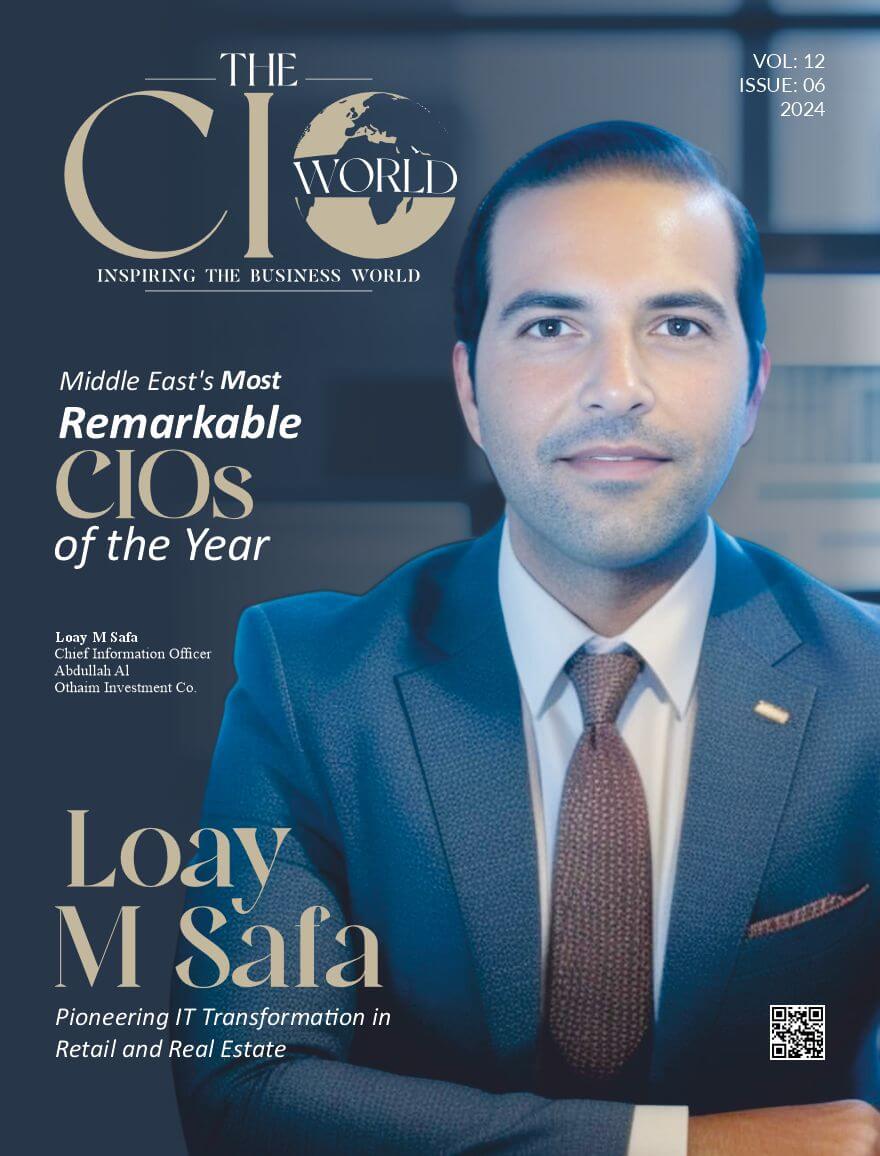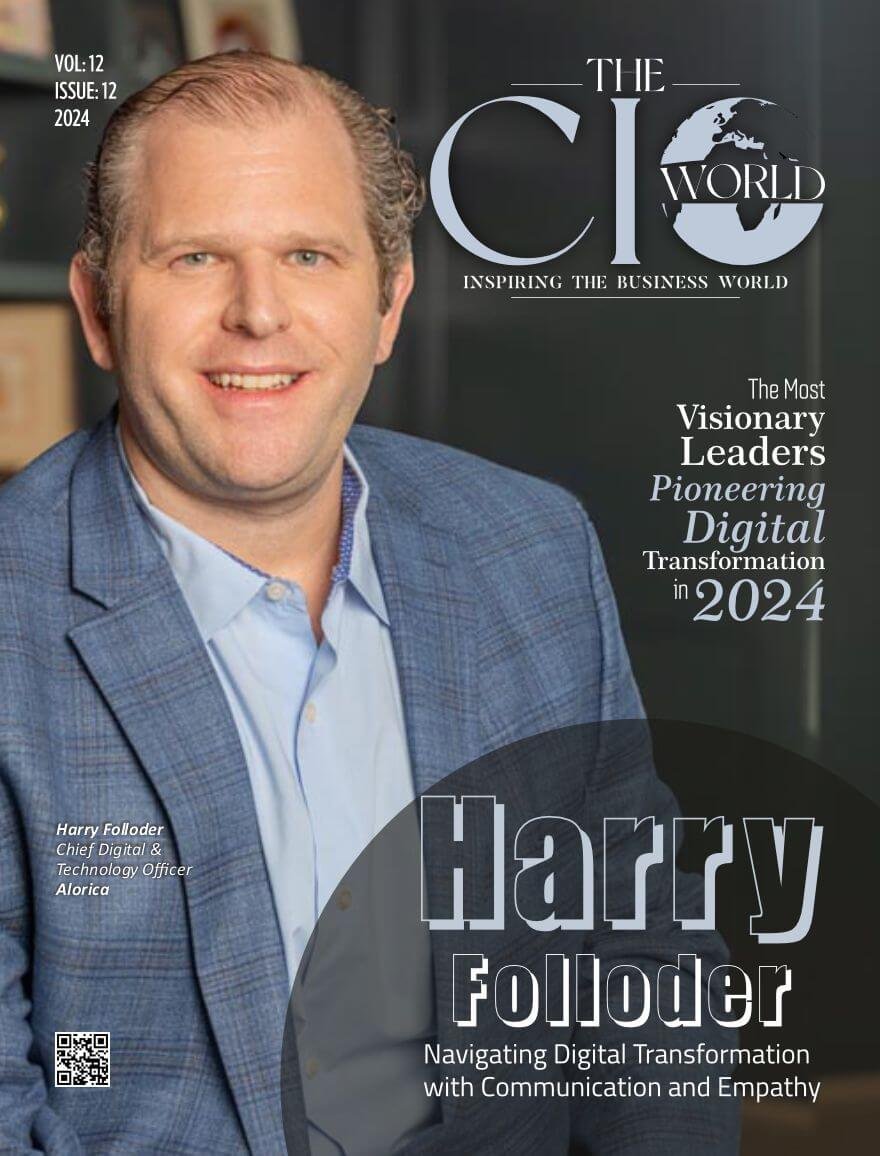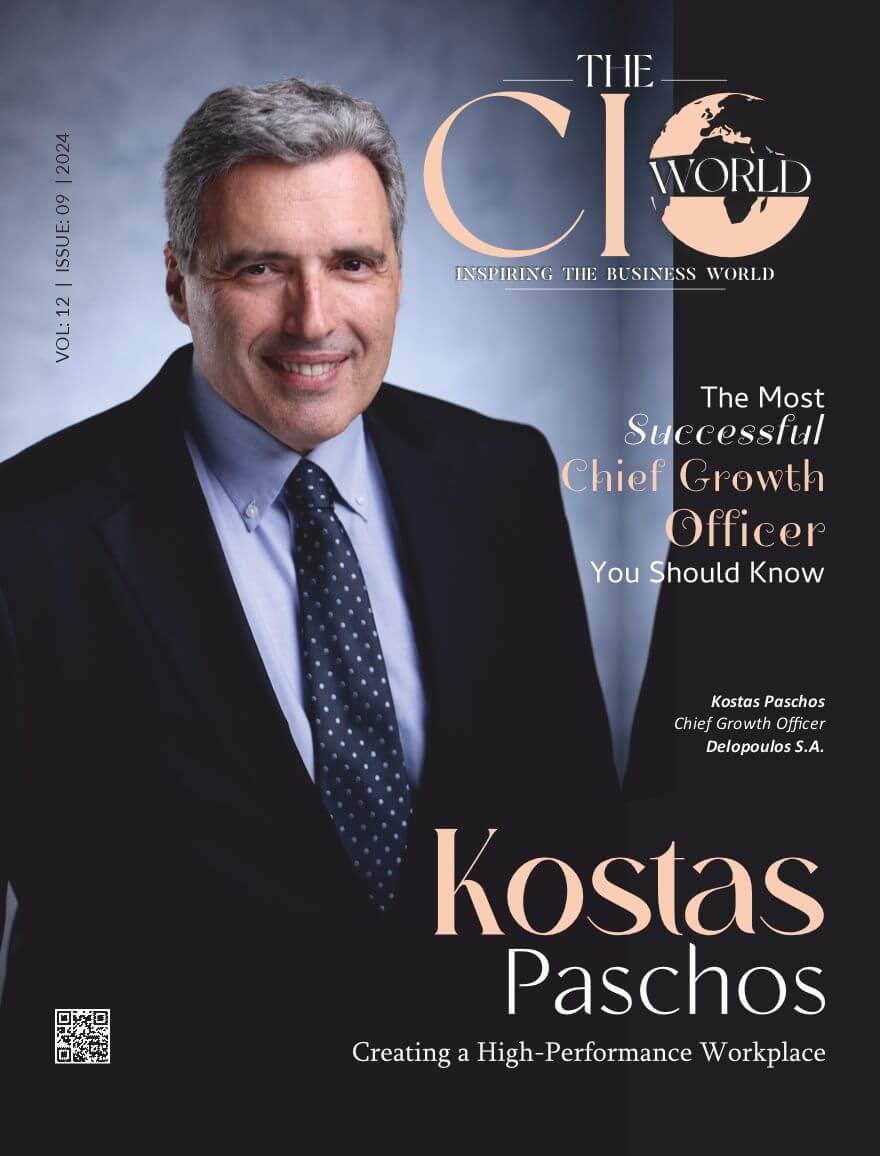Empowering Organizations with Automated Compliance Solutions!
As the sun rises over the bustling SaaS landscape, to reshape how organizations manage data governance and ensure compliance, a visionary leader steps forward with these commitments while enhancing customer experiences and trust in digital interactions.
Meet Michael Dyrbo Birch, the CXO of Tricent, a company dedicated to building remarkable customer experiences and loyalty throughout all touchpoints.
Michael’s expertise in promoting customer happiness, retention, and loyalty stems from his more than 15 years of experience heading customer success and support teams in the tech and telco business sectors.
With a Mini MBA in Human Resource Management and Psychology, a Professional Diploma in Customer Experience (CX), and certifications as a Communications Certified Engineer and SSCA® SIP School Certified Associate, among other credentials, he has the education and experience to create solutions that benefit customers and advance the SaaS sector.
His enthusiasm for comprehending and improving the customer journey is rooted in his conviction that a positive and easy-to-use customer experience is essential to any business’s achievement. At Tricent, he aims to make sure that their solutions go beyond client expectations and satisfy compliance needs, building enduring connections and customer loyalty.
Let’s know more about his journey:
A Vision for Customer Experience
As the CXO at Tricent, a prominent SaaS company, he is dedicated to enhancing customer journeys and fostering loyalty across all interactions. With over 15 years of experience in customer success and support within the tech and telecommunications sectors, he has established a strong record of boosting customer satisfaction and retention.
His qualifications enable him to develop customer-centric tools and solutions that significantly impact the SaaS industry.
Driven by a profound passion for improving the customer experience, Michael believes that a seamless journey is crucial for business success. At Tricent, his objective is to ensure that the company’s solutions not only comply with industry standards but also surpass customer expectations, thereby cultivating loyalty and long-term relationships.
Tricent: From Client Challenge to Innovative Solution
Tricent was founded in 2018 after a client approached them with a pressing issue. As one of Europe’s fastest growing fintech firms, it required a software solution to manage document sharing with third parties.
Initially, Tricent developed advanced back-end software that followed a blanket approach to unsharing, allowing admin users to remove file sharing permissions across the organization. However, this approach created a gray area regarding who decides what to unshare, prompting the company to engage end users directly.
Today, Tricent offers a file-sharing governance solution designed to enable the full value of productivity suites. With a focus on simplicity and the objective of optimizing workflows without disruption, Tricent’s innovative solution has become a game-changer in the industry.
Automation Enhances Compliance and Security
Michael recalls a critical instance where automation significantly improved compliance for a customer. An offboarded employee had shared documents with an external email address, inadvertently granting 2.4 million excessive permissions, which posed a severe security risk.
Utilizing their automated compliance and monitoring tool, the team quickly identified this unusual behavior. The system flagged the excessive permissions and alerted the administrators, who could then trace the external email address linked to the shared documents.
With the tool’s bulk unshare functionality, the admins efficiently revoked all permissions granted to the external email address. This swift action mitigated the potential security breach, ensuring compliance with data security policies and preventing data leakage. This example underscores the power of automation in enhancing compliance and security by providing detailed tracking and effective remediation options, allowing organizations to manage risks promptly and efficiently.
Balancing Compliance and Customer Experience
Balancing compliance with the desire to create exceptional customer experiences requires strategic implementation to ensure both regulatory adherence and customer satisfaction.
Understanding compliance requirements from customers is essential, prompting Tricent to continuously validate these needs throughout the software development lifecycle, ensuring that every update aligns with relevant regulations.
The company designs compliance processes that are unobtrusive, minimizing disruptions to the customer experience while prioritizing data privacy and security, which are crucial for maintaining customer trust. Transparent communication about compliance measures helps customers recognize the benefits of data protection, such as enhanced security.
Establishing a feedback loop allows Tricent to gather insights and refine processes, aligning them with both compliance and customer objectives. By incorporating these strategies, Tricent creates a balanced approach where compliance supports, rather than hinders, the delivery of exceptional customer experiences, ensuring a seamless customer journey.
The Cornerstone of Compliance Automation Strategies
Michael emphasizes the vital role customer feedback plays in shaping compliance automation strategies. Direct feedback from customers can pinpoint specific areas where compliance processes may cause friction or dissatisfaction.This will, in turn, allow for targeted automation improvements that can enhance the user experience.
Customers also provide valuable insights into the usability of compliance tools, aiding in refining interfaces and workflows to be more intuitive. This feedback ensures that compliance automation solutions address real-world challenges and meet the actual needs of customers, rather than relying solely on theoretical requirements.
By actively seeking and responding to customer feedback, he demonstrates his commitment to customer-centricity, fostering trust and stronger relationships. This approach not only enhances compliance strategies but also ensures that they align with customer expectations, ultimately leading to more effective and user-friendly solutions.
Through this continuous dialogue, he allows the organization to better meet the needs of its clients while maintaining robust compliance standards.
The Influence of Education and Certifications
Michael attributes his comprehensive approach to customer success and compliance automation to his diverse educational background and certifications. By integrating expertise in technical certifications, psychology, customer experience, and human resources, he ensures that Tricent’s strategies align with client demands while maintaining technological reliability.
His training and certification experiences drive a commitment to continuously enhance processes and tools, address evolving regulatory needs, and ensure secure solutions. By understanding the entire customer journey, he identifies critical touchpoints where security measures can be integrated seamlessly, enhancing the overall experience without disruption. This holistic perspective fosters a customer-centric approach that prioritizes both compliance and satisfaction.
Overcoming Challenges in Automated Compliance Implementation
In Michael’s experience, organizations often face compatibility issues with outdated legacy systems when implementing automated compliance solutions. Significant customization and technical expertise are required to integrate or build in-house solutions, leading to increased costs and implementation time.
As organizations grow, their compliance needs expand, necessitating scalable, automated solutions that can accommodate increasing data volumes and regulatory changes without significant re-engineering. Implementing these solutions can be expensive, encompassing software costs, customization, integration, training, and ongoing maintenance.
To overcome these challenges, he suggests conducting thorough assessments of existing systems and processes to identify compatibility issues and integration requirements. Investing in scalable, preferably SaaS, solutions that offer flexibility and regular updates is crucial. Comprehensive training programs ensure employee proficiency and understanding of the system’s benefits.
Carefully evaluating the total cost of ownership, including long-term maintenance and support, helps organizations determine the financial viability of the solution. Performing due diligence when selecting vendors, considering their expertise, track record, and ability to provide tailored solutions, further mitigates implementation challenges.
Engaging Teams in Compliance Technology Adaptation
Michael emphasizes the importance of effective communication in keeping teams engaged and motivated while adapting to new compliance technologies. By clearly articulating the benefits and goals of new processes, he ensures that team members understand their purpose and value.
Providing ongoing training and support builds confidence in using new tools. Involving team members in the selection and implementation phases fosters a sense of ownership and commitment. Recognizing and rewarding efforts to adopt new technologies reinforces positive behaviors.
Creating an open feedback environment allows team members to voice concerns and suggest improvements. He believes that teamwork is essential for success, stating, “I cannot do this alone, but as a team, we can do anything.”
Coaching for Enhanced Customer Success Skills
Michael shares an example of mentoring a team member who joined as a Customer Success Manager with strong communication skills but limited experience in strategic client management. Recognizing their struggle with proactive engagement, he initiated a structured coaching plan.
He paired the team member with an experienced Customer Success Manager to provide mentorship on effective client engagement strategies. Together, they set clear development goals focused on proactive outreach and strategic planning. Real-life scenarios and case studies were used to encourage practical application.
Regular feedback sessions allowed them to review progress and celebrate successes, while Michael provided actionable feedback to boost confidence. As a result, the team members significantly improved their ability to manage client relationships, anticipate needs, and develop long-term strategies, ultimately enhancing overall customer satisfaction and retention rates.
Measuring Success in Compliance Automation
Michael outlines key metrics used to evaluate the success of compliance automation initiatives and their relation to customer satisfaction.
- Handling Time: This metric measures the reduction in time required to complete tasks related to permission removal.
- Users in Cleanup: Tracking this metric reveals the benefits customers gain from the solution.
- Customer Feedback: Direct input from customers provides insights into their experiences and alignment with expectations.
- Adoption Rate: The rate at which employees and customers utilize the new automation tools indicates usability and acceptance.
Together, these metrics help ensure that compliance automation initiatives enhance both operational efficiency and customer satisfaction.
Staying Ahead in the Evolving Regulatory Landscape
Michael emphasizes the importance of staying informed about regulatory changes to enhance compliance automation efforts. He pursues ongoing learning through relevant courses, webinars, and certifications focused on compliance updates.
Engaging with industry networks and professional associations allows him to exchange knowledge and gain valuable insights. Additionally, he subscribes to services that provide timely updates on regulatory trends and collaborates with legal experts to interpret new regulations and their operational impacts.
His proactive approach enables Tricent to design tools and processes that meet current and future regulatory requirements, effectively minimizing risks.
Fostering a Culture of Accountability
Michael fosters a culture of accountability and responsibility regarding compliance by developing clear policies, ensuring leadership commitment, providing training, and establishing transparent reporting mechanisms.
This approach promotes understanding of responsibilities, sets the tone from the top, educates on requirements, and encourages prompt issue resolution.
Future Innovations
Michael anticipates several key innovations shaping the future of compliance automation in the SaaS industry.
- Artificial Intelligence and Machine Learning: These technologies enhance predictive analytics and automate auditing processes, improving compliance management accuracy and efficiency.
- Robotic Process Automation (RPA): RPA is increasingly utilized for managing repetitive compliance tasks, enhancing accuracy and efficiency.
- Blockchain Technology: This technology is expected to revolutionize record-keeping with secure, immutable records and smart contracts, enabling automated enforcement of compliance measures.
These advancements will significantly transform how organizations approach compliance in the evolving regulatory landscape.







